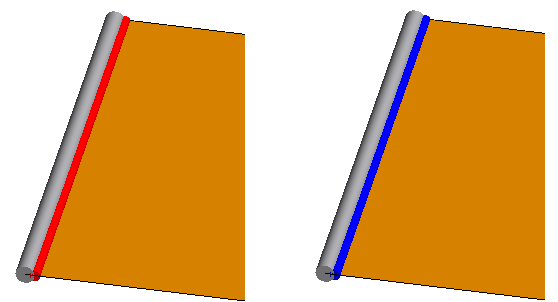Microstrip Ports
Apply a microstrip port to represent a feed line in a microstrip structure. A microstrip port is specified on an edge or a set of edges that form a continuous, straight, horizontal (lie in a constant Z plane in the global coordinates) edge that borders only a single face.

Figure 1. Examples of a microstrip port connected to an edge. The positive side of the microstrip port is indicated in red (on the left) and the negative side of the port indicated in blue (on the right).